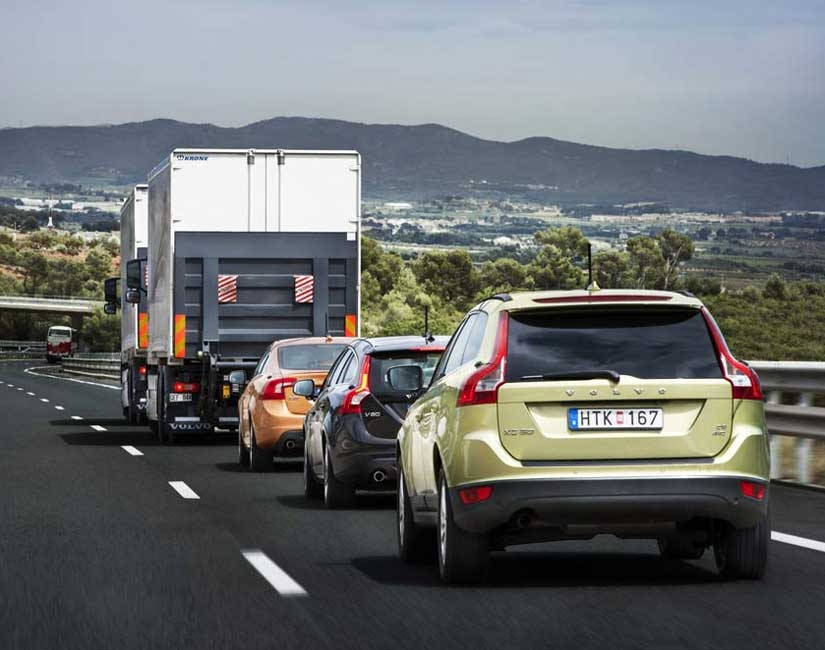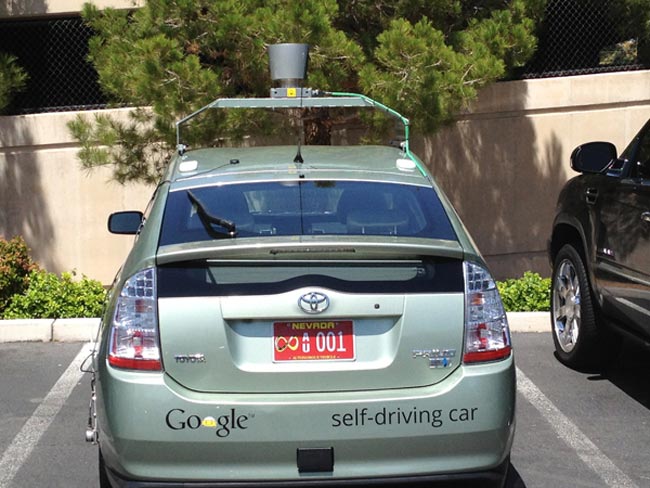 Motorists recently travelling along a public highway near Barcelona must surely have done a double-take, convinced that their eyes were deceiving them.
Motorists recently travelling along a public highway near Barcelona must surely have done a double-take, convinced that their eyes were deceiving them.
Well, what would you have thought if you’d overtaken a car whose ‘driver’ – instead of having her eyes firmly glued on the road ahead – was idly flipping through the pages of a magazine? Not only that, but so were the drivers of the next two cars, plus a lorry, that made up the convoy of vehicles travelling at a sedate 85kph, in a follow-the-leader platoon with a professional driver at the wheel of the lead lorry.
To the unsuspecting, it might well have looked like yet another Top Gear stunt, except that, hold on a minute, Clarkson & Co were absolutely nowhere to be seen…
So what was going on? Volvo drivers aren’t generally known for their recklessness, yet here were an XC60, V60 and S60 plus a Volvo truck, all apparently throwing caution to the wind.
Actually, we’re talking about the Sartre project – which in case you’re wondering has absolutely nothing to do with French existentialist philosopher, playwight, screenwriter, political activist, biographer and literary critic, Jean-Paul Sartre – but is the acronym for Safe Road Trains for the Environment. Partly funded by the European Commission, it’s a joint venture between UK car technology firm Ricardo, Spain’s Tecnalia Research & Innovation, Germany’s Institut für Kraftfahrzeuge Aachen, The Technical Research Institute of Sweden, plus Volvo Technology and Volvo Car Corporation.

Self-driving car technology means 'drivers' can read a magazine, use their laptop or tuck into a meal while their car does the driving for them.
The objectives? To have lots of cars ‘slaved’ to a lead vehicle and travelling at high speed along specific routes on motorways, freeing up drivers from actually controlling their vehicles, to provide benefits in terms of safety and congestion, while fuel consumption could be reduced by up to 20%.
The 3-year Sartre project kicked off in 2009 and since then the vehicles involved have clocked-up around 10,000km on test circuits. What happened in Spain was Sartre’s first road trial on a public motorway. “Driving among other road-users is a great milestone in our project. It was truly thrilling,” says Volvo Car Corporation’s Sartre project manager, Linda Wahlström. “We travelled 200km in one day. The test turned out well, we’re really delighted.”
The vehicles, which each had a gap of just 6 metres between them, are fitted with a hi-tech suite of cameras, radar and laser sensors enabling a wirelessly-linked convoy to travel autonomously in a road train, precisely mimicking the acceleration, braking and turning of the platoon leader.

Linda Wahlström - Volvo Car Corporation's Sartre project manager.
“We’ve focused really hard on changing as little as possible in existing systems, explains Wahlström. “Everything should function without any infrastructure changes to the roads, or expensive additional car components. Apart from the software developed as part of the project, really it’s only the wireless network installed between the cars that sets them apart from other cars available in showrooms today.”
The system is also designed to be retrofitted to vehicles currently in production, and according to Volvo, the analysis of fuel consumption will be the main focus of the next phase of the project.
“People think autonomous driving is science fiction,” says Wahlström. “But the fact is that the technology is already here.”

The state of Nevada granted a permit to the first fully licensed autonomous car in May 2012.
Meanwhile, on the other side of the pond, Google’s self-driving cars – which have already covered more than 200,000 miles without driver intervention – highlight that point. Just last month Nevada granted a permit to the first fully licensed autonomous car, a modified Toyoto Prius, allowing it to be driven on the state’s roads, although the law dictates that there must be two people in the car at all times, one behind the wheel and the other monitoring the vehicle’s computer screen. Currently legislation to regulate self-driving cars is being considered in other US states, including of course Google’s home state of California.
 en
en



 Vlaams-Nederlands
Vlaams-Nederlands
0 Comments
Leave a Comment
DISCLAIMER
The opinions and comments expressed by contributors to this Blog are theirs alone and do not necessarily reflect the views of VIVA Homes Under the Sun Ltd, any of its associated companies, or employees; nor is VIVA to be held responsible or accountable for the accuracy of any of the information supplied.
Have you got something to say?